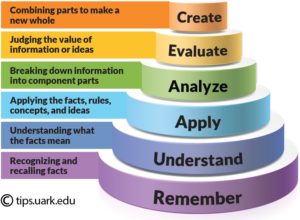The following post is by Michael O’Hare, and it was posted on April 6, 2016 on the Berkeley Center for Teaching & Learning website http://teaching.berkeley.edu<http://teaching.berkeley.edu/> . This work is licensed under a Creative Commons Attribution-NonCommercial-NoDerivs 3.0 Unported License 2013 (may be reproduced with credit for non-commercial purposes.<http://creativecommons.org/licenses/by-nc-nd/3.0/deed.en_US> Michael O’Hare’s blog: http://www.samefacts.com/
Adapted from “Tomorrow’s-professor” Digest, Vol 113, Issue 2
—————————————————————————————————————————————————-
This note describes a method for critiquing student work that greatly increases the efficiency of the process compared to written comments. I discovered it by accident, when I graded a bunch of papers on a portable dictating machine while traveling, back in the day when professors didn’t have laptops but did have assistants. I gave the tape to my assistant to transcribe. I asked the next day whether she had finished, and she said “Are you kidding? Do you know how long this is?” The updated system described here has the advantage of using a technology familiar to students (mp3 audio). An intermediate stage involved cassette tapes that were tedious to keep track of and exchange.
Process:
(1) Obtain a headset such as you would use for Skype (earphones and a mic). Also get this software http://stepvoice.com/index.shtml (windows only) or this http://audacity.sourceforge.net/ <http://audacity.sourceforge.net/%20%0D (mac or windows). The voice recorder that comes with Windows is pretty rudimentary and makes only .wma files, which are less widely used than mp3?s. Here is a page of options for Mac audio recording – http://techchannel.radioshack.com/make-voice-recording-mac-1621.html
(2) Invite submissions in MSWord (or on paper); pdfs are quite tedious to annotate and almost impossible to edit (unless you use PDF Annotator<http://www.pdfannotator.com/> or an equivalent, with a tablet screen you can write on).
(3) Start a memo of general comments, with numbered entries. It should begin with “Comments on your paper are on the attached mp3 files and keyed to letters on your original. Listen to file 1 first. GN refers to something in this memo, RN to the Rhetoric Note distributed earlier.”
(4) Open student Smith’s paper and turn on Track Changes. Under Track changes/Change tracking options, switch the colors for inserts and deletes to blue or green, anything but red (grownups do not write on other grownups’ work with a red pen,; it’s affectively very bad). (Option: if you like to work from a paper draft, you may of course just write on it, edit with proofreader’s marks, etc.)
(5) Set the recording software to mono and a low bit rate, for smaller files. Start a new file, which will be called smith2.mp3 . Say “Hi, Georgia. These are thoughts on your paper draft that came to me as I read it”, then pause the recorder. Annotate the student paper with edits to the text as you see fit, to illustrate rhetorical issues and the like. But when you want to make a substantive comment, just put a key letter in the student paper (A, B, C, etc.) and dictate “At letter A: this is an interesting insight. Can you apply it also to your second alternative policy?”, “At letter B: shouldn’t the predominance of poltergeist manifestations have been mentioned earlier?” etc.
(6) After a few papers, you will have found that some comments apply to many; put these in the general comment memo, and then you just have to highlight or circle text and write “GN3”
(7) When you finish a pass through the paper, you have three options; the important thing is to be sure the student hears your general comments, which must begin with something positive, first. Your passim observations will mostly be critical or questioning. Of course if you can catch students doing specific things right and (i) say so (ii) say what it is, not just “good” in the margin, It’s valuable; I don’t do enough of this and am trying to teach myself to do more.
- Type or write a few lines of overview evaluation at the beginning of the draft.
- If using Stepvoice, which doesn’t allow you to insert, start a new file, called smith1.mp3 and dictate overview comments. End it with “now listen to the other mp3 file for specific comments keyed to letters in your draft.”
- If using Audacity, you can insert the general comments at the beginning of the mp3 file. You can also open the first-pass mp3 file from Stepvoice in Audacity to do this, but then you have to resave it as an mp3.
(8) Return the annotated Word file (or the scribbled paper copy) and the mp3 file[s] to the student, the mp3s as email attachments. Students are quite accustomed to dealing with mp3 files.
Technical notes: Stepvoice has VAS, which starts recording when you speak and stops when you are silent. This saves a lot of mouse clicks recording and pausing, and avoids long silences when you forget to pause;
Compared to comments on a final paper at the end of the course, I’d say it’s about twenty times as valuable per minute invested, especially effectively, because negative comments on a finished paper are just lost chances for the student to regret, but on a draft they are opportunities to seize.


